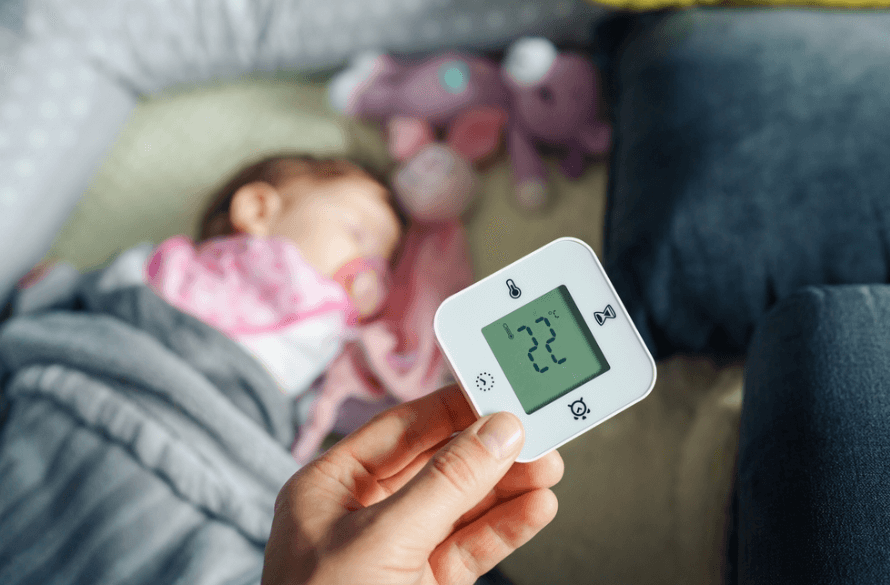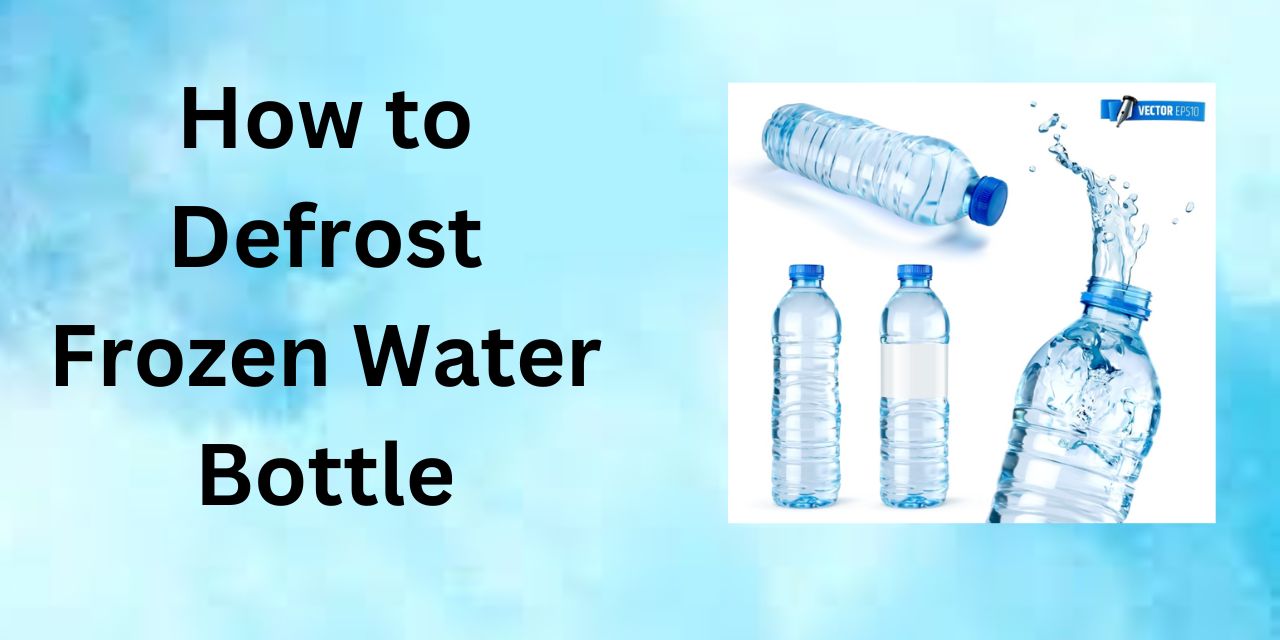Table of Contents
Defrosting a frozen water bottle is a simple process. Here are a few methods you can use:
Room Temperature
To defrost a frozen water bottle at room temperature, follow these simple steps:
Remove from Freezer
Take the frozen water bottle out of the freezer.
Place on a Countertop
Set the frozen water bottle on a countertop or any flat surface at room temperature.
Wait for Natural Thawing
Allow the ice inside the bottle to melt naturally at room temperature.
The time it takes for the water bottle to defrost will depend on the size of the ice block and the ambient temperature in the room.
Optional Rotation
You can periodically rotate the bottle to expose different sides to the room temperature, which may speed up the thawing process.
Patience
Be patient and let the ice melt gradually. Avoid using any external heat sources or tools that might compromise the bottle or its contents.

Running Water
To defrost a frozen water bottle using running water, follow these steps:
Remove from Freezer
Take the frozen water bottle out of the freezer.
Turn on the Tap
Turn on the tap to allow a steady stream of running water.
Hold Under Running Water
Hold the frozen water bottle under the running tap water.
Make sure the water is cold or lukewarm, not hot.
Rotate the Bottle
Rotate the bottle to ensure that all sides are exposed to the running water.
This helps melt the ice more evenly.
Monitor the Process
Keep an eye on the bottle as it thaws. Depending on the size of the ice block, this method can be relatively quick.
Use Your Hands if Needed
If the ice is stubborn in certain areas, you can use your hands to massage or apply gentle pressure to speed up the thawing process.
Dry the Bottle
Once the ice has melted, dry the bottle with a towel before using or returning it to the freezer.
Warm Water Soak
To defrost a frozen water bottle using a warm water soak, follow these steps:
Fill a Basin or Bowl
Fill a basin or bowl with warm (not hot) water. The water should be warm enough to accelerate the thawing process but not so hot that it could damage the bottle.
Submerge the Bottle
Submerge the frozen water bottle in the warm water, ensuring that the entire bottle is covered.
Rotate or Shake the Bottle
Periodically rotate or shake the bottle gently to help distribute the warmth and facilitate even thawing.
Monitor the Thawing
Keep an eye on the bottle to gauge the progress of the thawing process. Depending on the size of the ice block, it may take some time.
Massage the Bottle if Needed
If there are areas where the ice seems stubborn, you can gently massage or apply slight pressure to those spots to expedite the melting.
Dry the Bottle
Once the ice has completely melted, dry the bottle with a towel before using or returning it to the freezer.
Use Your Hands
Using your hands to defrost a frozen water bottle is a simple and natural method. Here’s how you can do it:
Remove from Freezer
Take the frozen water bottle out of the freezer.
Hold the Bottle
Hold the frozen water bottle in your hands. The heat from your hands will gradually transfer to the bottle, helping to melt the ice.
Rotate the Bottle
Rotate the bottle in your hands to ensure that all sides are exposed to the warmth. This will promote even thawing.
Apply Gentle Pressure
If there are specific areas where the ice is more stubborn, you can apply gentle pressure with your fingers to those spots. Be careful not to use excessive force, especially if the bottle is made of glass.
Massage the Bottle
Gently massage the bottle to distribute the heat evenly. This can help accelerate the thawing process.
Be Patient
Be patient and allow the ice to melt gradually. This method may take some time, depending on the size of the ice block.
Dry the Bottle
Once the ice has melted, dry the bottle with a towel before using or returning it to the freezer.
Microwave (Caution)
Using a microwave to defrost a water bottle should be approached with caution, and it’s important to note that this method is generally not recommended for plastic bottles due to the risk of deformation or release of harmful chemicals. However, if your water bottle is made of glass and is labeled as microwave-safe, you can use the defrost setting or short intervals. Here’s how:
Check the Material
Ensure that your water bottle is made of microwave-safe material. Look for any labels or markings that indicate its suitability for microwave use.
Remove Cap
If your water bottle has a cap, remove it before placing the bottle in the microwave.
Use the Defrost Setting
If your microwave has a defrost setting, use it. This setting is designed to thaw items gradually, minimizing the risk of uneven heating.
Short Intervals
If you don’t have a defrost setting, use short intervals (e.g., 20-30 seconds) at a low power setting. This helps prevent the water from getting too hot too quickly.
Rotate the Bottle
After each interval, rotate the bottle to ensure even warming. This helps prevent hot spots and ensures that the ice melts uniformly.
Check Frequently
Keep a close eye on the bottle and check its progress frequently. Microwaving times can vary depending on the size of the ice block and the wattage of your microwave.
Be Cautious with Glass
If your bottle is made of glass, be aware that sudden temperature changes can cause it to break. Handle the bottle with care and avoid exposing it to extreme temperature shifts.
Dry the Bottle
Once the ice has melted, dry the bottle with a towel before using or returning it to the freezer.
Conclusion
In conclusion, defrosting a frozen water bottle is a simple yet essential task that can be accomplished using various methods, each with its own advantages. Whether opting for the gradual thawing in the refrigerator, the quicker method of placing the bottle in lukewarm water, or utilizing the natural ambient temperature, the key is to exercise patience and avoid using excessive heat sources. By following these methods, one can ensure the safe and efficient defrosting of a frozen water bottle while preserving the integrity of the container and its contents. Ultimately, the choice of method depends on the urgency of the need for unfrozen water and the time available, but regardless of the approach, a little planning and care will help maintain the quality of the water and the bottle itself.
for more blog visit our website : bottlemore
